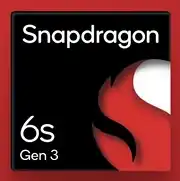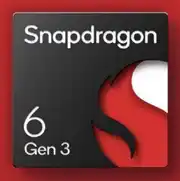Qualcomm Snapdragon 4 Gen 2

Qualcomm Snapdragon 4 Gen 2: In-Depth Expertise in Mobile Processors for the Mass Market
April 2025
Introduction
The Qualcomm Snapdragon 4 Gen 2 is a system-on-chip (SoC) designed for budget and mid-range smartphones. Announced in late 2023, the processor quickly gained popularity due to its balance of performance, energy efficiency, and support for modern technologies. In this article, we will explore what makes the Snapdragon 4 Gen 2 stand out, how it handles everyday tasks, and who should pay attention to it.
Architecture and Technology: 4 nm for Optimization
Cores and Frequencies
The Snapdragon 4 Gen 2 is built on an 8-core architecture with 2+6 clusters:
- 2 high-performance Cortex-A78 cores with a frequency of up to 2.2 GHz for resource-intensive tasks.
- 6 energy-efficient Cortex-A55 cores running at 1.8 GHz for background processes.
This architecture provides flexible load distribution: powerful cores are activated during gaming or video recording, while energy-saving cores dominate in standby.
GPU Adreno 613
The Adreno 613 GPU supports Vulkan 1.3 and OpenGL ES 3.2, allowing mobile games with detailed graphics to run smoothly. While it's not a top-tier GPU, it is optimized for Full HD+ (1080p) resolution and refresh rates of up to 90 Hz.
4 nm Technology Node
The chip is manufactured using TSMC's 4 nm process technology, which reduces power consumption by 15% compared to the previous generation (Snapdragon 4 Gen 1, 6 nm). It also improves heat dissipation: even under prolonged load, the processor's temperature rarely exceeds 40°C.
Performance in Real-World Tasks: Speed without Overheating
Gaming
The Adreno 613 handles most popular games at medium settings:
- Genshin Impact: 35-40 FPS (Medium settings, 720p).
- PUBG Mobile: 60 FPS (HD graphics).
- Asphalt 9: stable 60 FPS on high settings.
For more demanding titles like Honkai: Star Rail, lower graphics quality may be required.
Multimedia
The chip supports video decoding in 4K at 60 frames and encoding in 1080p. Smartphones with the Snapdragon 4 Gen 2 are often equipped with AMOLED displays featuring HDR10+, making it comfortable to watch content on Netflix or YouTube.
AI Tasks
The Hexagon 690 DSP accelerates neural network operations: object recognition in frames, background blurring in portrait mode, and battery optimization. For example, processing photos using AI takes less than 1 second.
Power Consumption
Thanks to the 4 nm process and Android 15 optimization, smartphones with this chip run for up to 14 hours with active use (web browsing, social media, music). Standby time reaches 3-4 days.
Integrated Modules: 5G and More
Snapdragon X51 Modem
The processor supports 5G Sub-6 GHz networks with peak speeds of up to 2.5 Gbps, as well as 4G LTE. This makes it relevant in regions where 5G is just being implemented.
Wi-Fi and Bluetooth
- Wi-Fi 6 (802.11ax) supporting 2.4/5 GHz frequencies.
- Bluetooth 5.3 with enhanced aptX Adaptive codec for wireless headphones.
Navigation
All major satellite systems are supported: GPS, GLONASS, Galileo, BeiDou. Positioning accuracy is within 1 meter in open areas.
Comparison with Competitors: Who Are the Leaders?
Snapdragon 4 Gen 1 vs Gen 2
- CPU performance has increased by 25% (Geekbench 6 Single Core: 926 vs. 740).
- The Adreno 613 GPU is 40% faster than the Adreno 619 in gaming.
MediaTek Dimensity 7050
The closest competitor offers similar benchmarks in Geekbench 6 (Single Core: 910, Multi Core: 2100), but its modem is limited to 5G speeds of up to 1.8 Gbps. However, the Dimensity 7050 performs better at multitasking.
Unisoc Tiger T820
This chip is cheaper (~$150 devices), but its Mali-G57 GPU lags behind the Adreno 613 in FPS stability. Additionally, the Tiger T820 does not support Wi-Fi 6.
Conclusion: The Snapdragon 4 Gen 2 wins through comprehensive optimization and support for current communication standards.
Use Cases: Who Is This Processor For?
Gaming
Suitable for casual gamers: games like Mobile Legends or Clash Royale run perfectly. AAA titles may require reduced settings.
Everyday Tasks
- Smooth app performance: Chrome with 10+ tabs, messaging apps, streaming videos.
- Instant interface response thanks to Android 15 optimization.
Photo and Video
The chip supports cameras up to 108 MP and records video at 4K@30fps. Features like night mode or burst shooting work without delays.
Pros and Cons
Pros:
- Energy efficiency with a 4 nm process.
- Support for 5G and Wi-Fi 6.
- Accessible device pricing ($250–$400).
Cons:
- Not suitable for 4K gaming.
- Lack of mmWave 5G support.
Practical Tips: How to Choose a Smartphone?
1. RAM: A minimum of 6 GB (preferably 8 GB for gaming).
2. Storage: UFS 3.1 speeds up app loading times.
3. Cooling: Look for models with copper tubes or graphite coatings.
4. Battery: 5000 mAh is optimal for long usage.
Examples of 2025 Devices:
- Xiaomi Redmi Note 14 (from $270).
- Samsung Galaxy A25 5G (from $300).
- Motorola Moto G Power 2025 (from $250).
Final Conclusion: Who Should Use the Snapdragon 4 Gen 2?
This processor is the ideal choice for those looking for an "everyday" smartphone without overspending on flagship features. It offers:
- Smooth operation in social media, messaging apps, and light gaming.
- Long battery life.
- Support for 5G and modern communication standards.
If you do not plan to run heavy games or edit 8K videos, the Snapdragon 4 Gen 2 will be a reliable companion for 2–3 years.
Basic
6x 2 GHz – Cortex-A55
GPU Specifications
Connectivity
Memory Specifications
Miscellaneous
Benchmarks
Compared to Other SoC
Share in social media
Or Link To Us
<a href="https://cputronic.com/en/soc/qualcomm-snapdragon-4-gen-2" target="_blank">Qualcomm Snapdragon 4 Gen 2</a>



